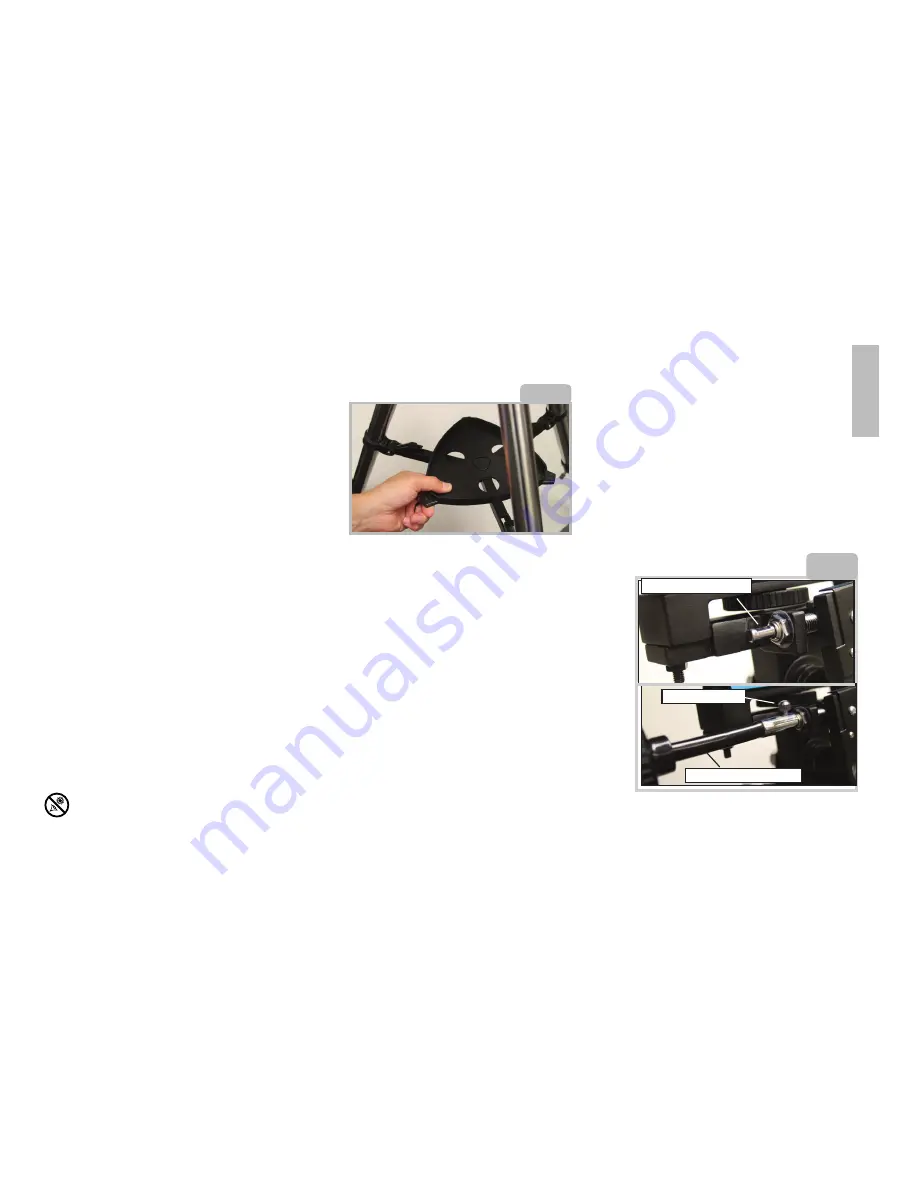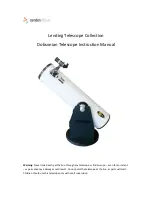
SETTING UP YOUR TRIPOD
The tripod is the basic support for your tele-
scope and comes pre-assembled from the
factory; except for the accessory tray. The
tripod height may be adjusted so that you
can view comfortably.
Note: Number in brackets, e.g., (3), refer
to the item numbers in Fig. 1.
1. To setup the tripod, spread the legs out
evenly and place it on a solid surface.
2. Set the height of your tripod:
a. Rotate and loosen the leg lock thumb-
screw (18) to unlock the leg lock.
b. Slide the inner portion of the leg (17) in
or out to the desired length. Repeat for
the other two legs.
c. Rotate and tighten the leg lock thumb-
screw to re-lock the leg lock.
d. Repeat for the other two legs.
ATTACH THE ACCESSORY TRAY
The accessory tray attaches at the center of
the tripod legs and is a convenient place to
hold eyepieces and other Meade accessories
while observing, such as the Barlow lens.
To attach, place the hole in the center of the
accessory tray over the attachment point as
shown in Fig 2. Then rotate the tray until the
wings of the tray snap into place on the tripod
leg brace supports(9).
To remove the tray, rotate the tray so it
unlocks from the leg brace supports (9), then
remove.
ATTACH THE SLOW-MOTION CONTROLS
The slow motion control cables (11 & 12) allow
you to make fine adjustments to the pointing
position of the optical tube. When viewing
objects in the night sky, you will notice that
the object moves slowly in the eyepiece. This
is caused by the Earths rotation. Use the slow
motion controls to follow (or “track”) these
objects as you observe. Note that each
axis has its own slow motion control
which is independently controlled.
To install, attach the flexible cables
(11 & 12) to the mount as shown in Fig 3.
The cables are secured in place with a firm
tightening of the thumbscrews located at the
attachment ends of each cable.
3
Fig. 2
Looking at or near the
Sun
will cause
irreversible
damage to your eye. Do not point this telescope at or near the Sun. Do not look through the telescope as it is moving.
Fig. 3
Attachment point
Thumbscrew
Slow motion cable
Summary of Contents for Infinity 102
Page 18: ...2014 Meade Instruments Corp...





































